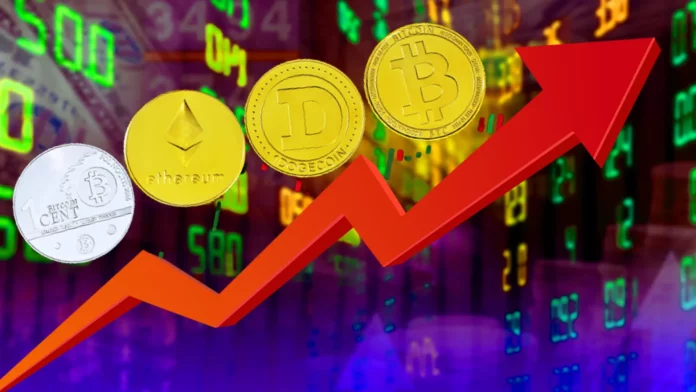
- Crypto trading strategies are a prerequisite understanding before individuals venture into trading.
- Due to the volatile nature of the market, risks, and pitfalls are plenty.
- Experts recommend certain strategies to move along, in order to gain more profits and minimize losses.
Crypto trading is increasingly becoming an occupation for crypto-enthusiastic individuals. With more active participation, comes more volatility. Hence, experts recommend a number of techniques that can help you remain profitable. It includes day trading, careful capital investment, Dollar Cost Averaging, and intensive research, among other basic strategies. And then there are more to get to the pro level.
Basic crypto trading strategies for beginners
- DYOR — do your own research: It goes without saying that venturing into any investment needs thorough primary research on that subject. With so many options available to invest, it is vital that you research all the investment options. Don’t just look for price analysis but also look for all the past and present news about a cryptocurrency. Then set an investment goal after evaluating your finances and invest in the asset that suits you best.
- Dollar Cost Averaging (DCA): For a beginner investor whose primary concern is to learn the market, Dollar Cost Averaging is the best strategy for buying crypto. It means spending the investment sum into smaller pieces at fixed intervals of time instead of making a big purchase with the entire amount at once. It’s important to keep in mind that the asset and timing of the purchase fragment must always be the same.
It is an especially useful tool for newbie investors to avoid the volatility of the market. It also alleviates the cumbersome task of constantly watching the market. In the end, the investor usually retains more of the cryptocurrency than they would’ve had they spent the lump sum in one go.
- Relative Strength Index (RSI): Although studying Relative Strength Index is a technical tool, a keen investor must learn to study RSI charts for effective trading. It is basically a chart that shows the buying and selling trends of an asset within a set percentage range. The range is a translation of the price trends of a cryptocurrency.
It is a very powerful tool to identify the time of trend reversals before they happen. It involves predicting the emergence of an uptrend before the ongoing downtrend has fully concluded, and vice versa
- Day Trading: It involves buying and selling your asset within the same day, or even within minutes, to take advantage of intraday price movements. Hence, it is an intraday trading strategy that can yield an aggregate profit over a cumulative period of time. Traders often use technical indicators or software to carefully determine entry and exit points.
- Range Trading: It uses basic indicators of the market – ‘support’ and ‘resistance’ – to determine a range within which trading can be optimized.
It is helpful to monitor market volatility and can only be used for trading over a period of a month or more.
- Diverse portfolio: This strategy comes from the age-old saying “Don’t keep all your eggs in one basket.” Obviously, because the market is highly volatile and there are way too many options for investing and securing your money. When one cryptocurrency experiences a negative fluctuation, another one may offset your losses
- Being extra careful during the hype and FOMO (fear of missing out) events: FOMO is one of the most common reasons new investors fail in crypto trading. Being a highly volatile market, it’s easy to get hyped about something in the market. But it is in these moments of hype when an investor should be the most alert.
Rather than following trends and influencers, investors should focus on understanding the intrinsic value of a crypto asset. Notably, whales and many celebrity influencers often engage in creating hype about a cryptocurrency for their own profit. Besides, many socio-political events dramatically affect the prices of many things like — forex pairs, cryptocurrencies, NFTs, real estate, stock indices, and major commodities.
On the other hand, a seasoned investor could also take advantage of these FOMO events, popularly known as a trading strategy – event-driven trading. It requires careful following of the news, making sure it’s not just a rumor, and then acting, using some technical analysis on it.
More advanced strategies to ace the game
- HODL — hold on for dear life: Although it is a very simple strategy but isn’t generally adopted by young investors. It means holding your assets for an enormous amount of time, such as 5-10 years.
Besides the understanding of primary rules and the myriad of market trends, it requires utmost patience, hence, only practiced by big investors. It is advised that the investor planning to HODL must only invest an amount that they can afford to lose.
Even though this strategy is vulnerable to market volatility, one needs to ignore short-term price fluctuations. It yields long-term profits which are vast, when the value of the asset has intrinsically elevated.
- High-Frequency Trading (HFT): It is a highly advanced trading strategy that uses AI for making trades. A trader who uses mathematics to develop algorithms to make “trading bots” is called a quant trader. These bots carry out accurate on-time entries and exits for the trader and can be used to carry out frequent trades in a short time. A quant trader must have a thorough understanding of complex market concepts to develop their personal trading bot.
- Moving Averages (MA), and Golden and Death Crossovers: This is a strategy that compares previous 50-day average prices and previous 200-day prices. The graph is represented as a line that is moving as the previous day’s averages are changing every day.
A golden cross occurs when the 50-day moving average surpasses the 200-day moving average, while a death cross refers to the opposite scenario.
- Scalping: Scalping is a high-speed trading strategy that involves entering and exiting positions multiple times a day within minutes. It involves gaining over small margins.
- Arbitrage: This trading strategy involves taking advantage of the price difference of a coin between two exchanges. It means that you buy the coin at one exchange and then sell it on another at a higher price.























